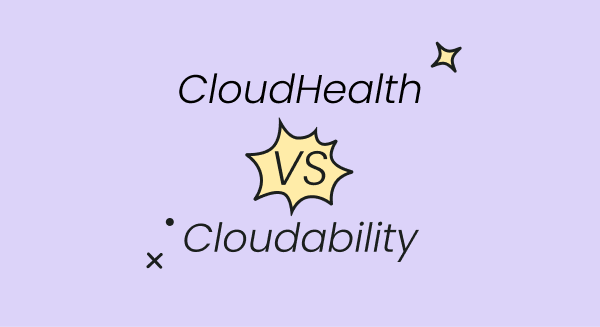
Navigating the complexities of Datadog's pricing model can be challenging, especially when it comes to their debugging tools. In this blog, we will break down Datadog Debug pricing, explaining its key components and helping you understand how to optimize your costs effectively. Whether you're a seasoned user or new to Datadog, this guide will provide valuable insights into managing your budget while leveraging Datadog's powerful debugging capabilities.
What is Datadog Debug?
Datadog Debug allows developers to troubleshoot and debug applications in real time. It provides deep visibility into application performance and behavior, helping developers identify and resolve issues quickly. With Datadog Debug, developers can capture and analyze detailed information about requests, traces, and logs, enabling them to pinpoint the root cause of problems and optimize application performance.
One of the key features of Datadog Debug is its distributed tracing capability. It allows developers to trace requests as they move through various components and services of their application, providing a holistic view of the entire transaction. This helps in understanding the flow of requests, identifying bottlenecks, and optimizing the performance of critical paths.
Additionally, Datadog Debug integrates seamlessly with other Datadog monitoring and observability tools, such as Application Performance Monitoring (APM) and logging. This allows developers to correlate debug data with other metrics, traces, and logs, providing comprehensive insights into application behavior.
The Value of Datadog Debug
Datadog Debug empowers developers to identify and resolve performance bottlenecks within their applications. It provides a comprehensive set of tools, including flame graphs, trace views, and live instrumentation, enabling real-time debugging and troubleshooting. By leveraging these capabilities, developers can significantly reduce mean time to resolution (MTTR) and enhance overall application performance.
Debug Pricing Tiers
Datadog Debug is available across various pricing tiers, including Free, Pro, and Enterprise. While the core functionality of debugging is included in all tiers, certain advanced features may have additional costs associated with them. It is crucial to understand the pricing details specific to your chosen tier and evaluate the value of these advanced features for your debugging needs.

Cost Considerations
- Data Volume: Datadog Debug pricing is influenced by the volume of debugging data ingested and stored. As you collect and retain more debugging information, costs may increase. It is essential to assess the necessary retention period and adjust data collection settings accordingly to optimize costs without sacrificing crucial insights.
- Advanced Debug Features: Datadog offers advanced debugging capabilities, such as code-level insights and distributed tracing, which may have separate pricing considerations. Evaluate the significance of these features for your debugging workflows and determine their value in optimizing application performance and resolving complex issues.
Optimizing Debug Costs
- Fine-Tuning Data Collection: Adjust the data collection settings within Datadog Debug to focus on critical areas of your application. By targeting specific components or functions, you can reduce the volume of debugging data ingested, leading to potential cost savings.
- Usage Analysis and Forecasting: Utilize Datadog's usage analytics and forecasting tools to gain insights into your debugging data consumption patterns. By understanding your usage trends, you can anticipate potential cost implications and optimize your debugging strategy accordingly.
- Collaboration and Documentation: Promote collaboration and knowledge sharing among your development teams to encourage efficient debugging practices. By improving the efficiency of debugging workflows and reducing the time spent on resolving issues, you can indirectly reduce costs associated with extensive debugging activities.
- Utilize a Cloud Cost Management Tool: Understanding the factors driving your costs is crucial to effectively reduce them. Deploying a comprehensive cloud cost management tool like Finout automatically identifies idle optimization opportunities for Datadog Debug costs, allowing you to optimize this spend and maximize savings.
Final Thoughts
By leveraging Datadog Debug and implementing cost optimization strategies, developers can reduce mean time to resolution, enhance application performance, and streamline debugging workflows. When considering the use of Datadog Debug, it's crucial to have a clear understanding of the pricing structure and associated costs. Factors such as data volume and advanced feature usage can significantly impact pricing.
To further optimize costs, developers can benefit from utilizing a cloud cost management tool like Finout. With tools like Finout, developers can automatically identify idle optimization opportunities specific to Datadog Debug, enabling them to maximize savings and efficiently manage their budget. This integration of cost management tools can greatly enhance the overall cost optimization process.
Read More About Datadog Costs
How Much Does Datadog Cost?
Understanding Datadog's pricing model is crucial when evaluating it as a solution. Explore the various factors that influence Datadog's pricing and gain insights into its cost structure. Additionally, discover effective considerations for managing usage-based pricing tools like Datadog within the context of FinOps.
Read more: How Much Does Datadog Cost?
Part I: Getting Around the Datadog Pricing Model
In the first part of the blog series, written by our talented Software Engineer, Boris Cherkasky, we explore the question: "Why you should care about your Datadog costs?" Boris dives into crucial aspects of Datadog costs, emphasizing the importance of understanding them. He also sheds light on how Datadog pricing works, shares his experiences and lessons learned as a Datadog user, and discusses strategies to crack the Datadog cost/usage model. Moreover, Boris provides valuable insights on how to effectively gain control over Datadog costs.
Read more: Part I: Getting Around the Datadog Pricing Model
Part II: The Magic That Is In Datadog Pricing
In the second part of the blog series written by our talented Software Engineer, Boris Cherkasky, we cover how in general Datadog products get billed, and uncover the factors that sometimes lead to unexpected end-of-month invoices.
Read more: Part II: The Magic That Is In Datadog Pricing
Part III: Data Puppy - Shrinking Data Dog Costs
In the third part of the blog series written by our talented Software Engineer, Boris Cherkasky, you will discover the key factors to consider for effectively managing your Datadog costs. Boris will guide you through the process of uncovering the hidden potential for Datadog optimization, enabling you to make the most out of this powerful platform.
Read more: Part III: Data Puppy - Shrinking Data Dog Costs
Datadog Pricing
Discover the intricacies of Datadog pricing, explore key features such as debug, custom metrics, and synthetic monitoring, and provide strategies to optimize costs without compromising on functionality.
Read more: Datadog Pricing Explained
Datadog Custom Metrics Pricing
Datadog custom metrics empower businesses to capture and analyze application-specific data points, tailored to their unique use cases. The true potential of Datadog custom metrics lies in the precise insights they offer into application performance. Therefore, comprehending the product's pricing structure and evaluating the value of advanced features becomes crucial in making informed decisions to optimize costs effectively.
Read more: Understanding Datadog Custom Metrics Pricing
Datadog Synthetic Pricing
Integrating Datadog Synthetic Monitoring into your monitoring and observability strategy is a vital step for organizations seeking to proactively monitor and optimize their applications, while ensuring exceptional user experiences and mitigating risks.
In this blog, we will dive into the Datadog Synthetic pricing structure and explore the key factors that influence these costs. By understanding these aspects, you will be equipped to make informed decisions and leverage the full potential of Datadog Synthetic Monitoring.
Read more: Understanding Datadog Synthetic Pricing
Optimizing Datadog Costs
Discover effective cost optimization strategies for utilizing Datadog to its full potential without incurring unnecessary expenses. By implementing these best practices, organizations can achieve maximum efficiency with Datadog while ensuring a high level of observability. Learn how to reduce monitoring costs without compromising on the quality of insights and monitoring capabilities.
Read more: Optimizing Datadog Costs









